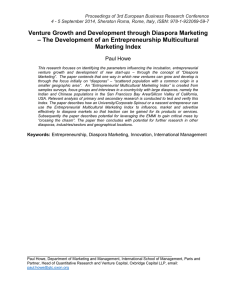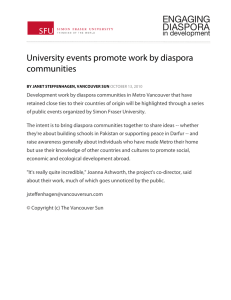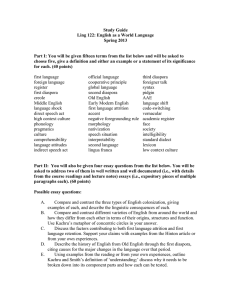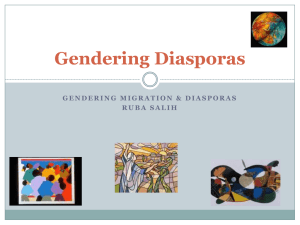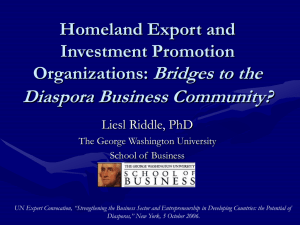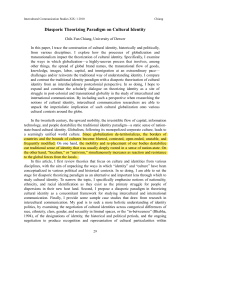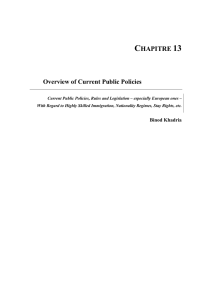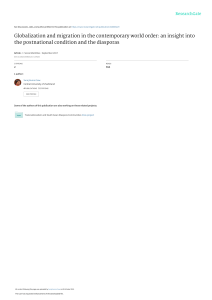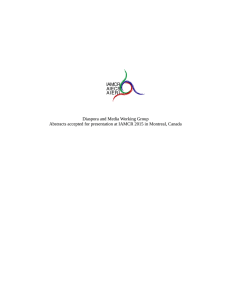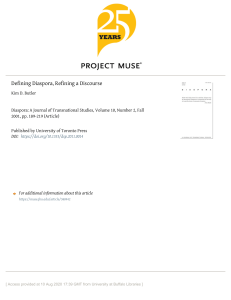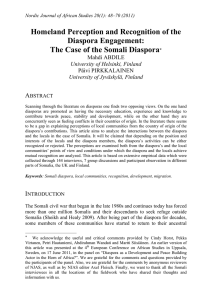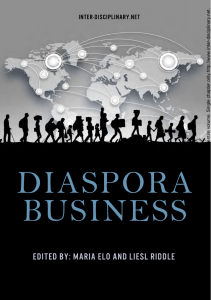Diaspora:A study of the Hmongs in USA Characteristics of Diaspora
advertisement
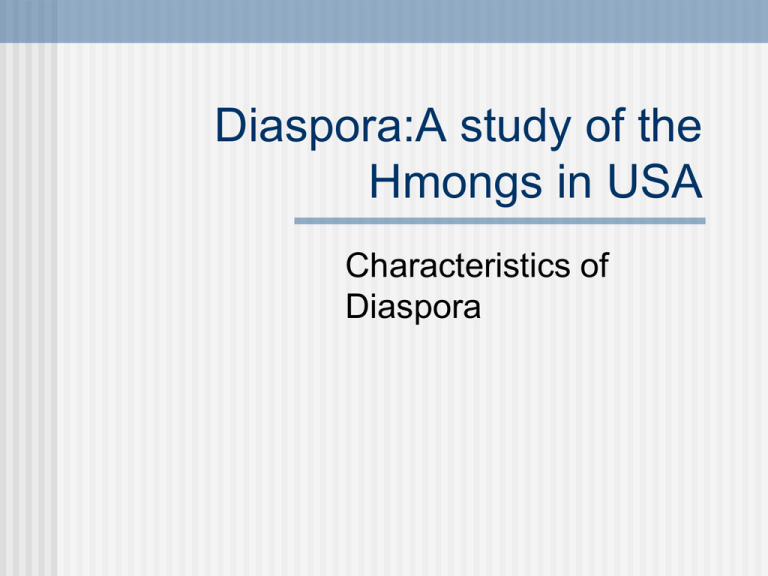
Diaspora:A study of the Hmongs in USA Characteristics of Diaspora Definition The term diaspora finds its roots in the Greek language and is based on a translation of the Hebrew word, Galut. Based on speiro (to sow) and the preposition dia (over), in the Ancient Greece, the word referred to migration and colonization. In Hebrew, the term initially referred to the setting of colonies of Jews outside Palestine after the Babylonian exile and has assumed a more general connotation of people settled away from their ancestral homelands (Shuval, 2003) In social sciences, the term diasporas is recent. Before the 80s, there are only few quotations of this concept. It was due to the fact, as Judith Shuval (2002) underlined, that before the 1960s, immigrant groups were generally expected to shed their ethnic identity and assimilate to local norms. Groups that were thought unable to do this, weren’t admitted, eg. Chinese to Canada, nonWhites to Australia. William Safran William Safran, one of the first authors to be published in the review Diaspora edited by Kachig Tololyan, suggests that in his view the term diaspora could be considered as a metaphoric designation and could apply to various populations (expatriates, political refugeesノ). In his essays (1991 & 1999), Safran defines the diasporas as follows: expatriate minority communities: 1. that are dispersed from a original center to at least two peripheral places 2. that maintain a memory, vision or myth about their original homeland; 3.that believe they are not and perhaps cannot be fully accepted by their host country; 4.that see the ancestral home as a place of eventual return when the time is right; 5. that are committed to the maintenance or restoration of this homeland, and; 6. of which the group’s consciousness and solidarity are importantly defined by this continuing relationships with the homeland. Paul Gilroy Cohen Paul Gilroy Cohen (1997a) summarized this current by quoting that in this perspective: diasporas are positioned somewhere between nationsstates and traveling cultures in that they involve dwelling in a nationstate in a physical sense, but traveling in an astral or spiritual sense that falls outside the nation-state’s space/time zone. The nation-state, as Paul Gilroy (1994) described, is the institutional means to terminate diaspora dispersal: on one side, through the assimilation and, on the other side, through return.
